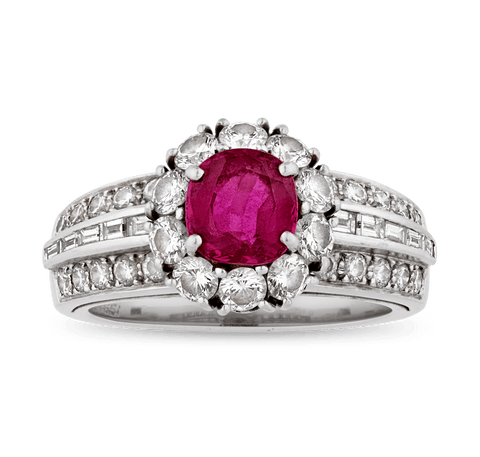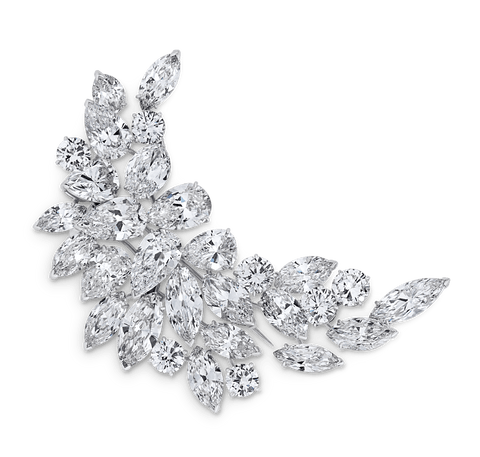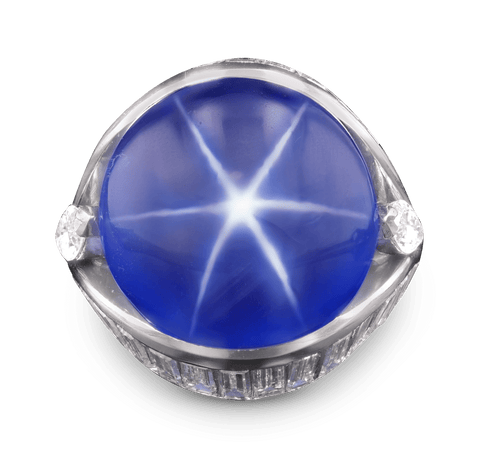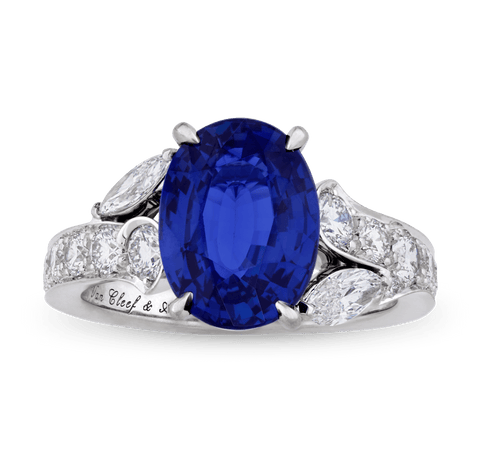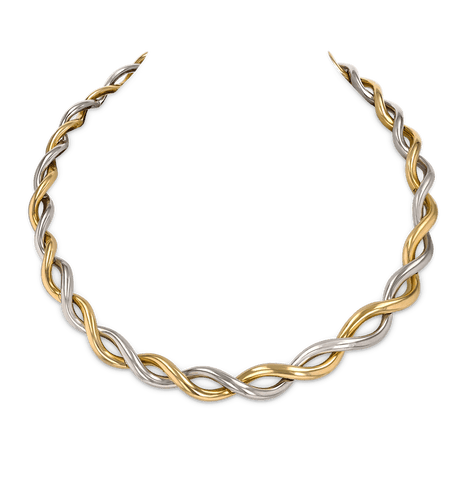Artists & Artisans
Van Cleef & Arpels
Introduction
From the streets of Paris to the red carpets of Hollywood, Van Cleef & Arpels has epitomized luxury and innovation in jewelry design. Since its inception, the firm has melded technical precision with unparalleled artistic flair, creating designs that are not only timeless but also the epitome of high fashion. Beloved by the Duchess of Windsor to Grace Kelly to Farah Pahlavi, the Empress Consort of Iran, the jewelry firm is synonymous with breathtaking wearable works of art.
Origins
Van Cleef & Arpels was established in 1906 by Alfred Van Cleef and his father-in-law Salomon Arpels in the heart of Paris. Alfred, born into a family of precious stone cutters, was predisposed to an affinity for gemstones and the art of jewelry making. His marriage to Estelle Arpels, the daughter of a dealer in precious stones, united two entrepreneurial and artistic visions under one marque. The duo's early pieces were profoundly influenced by the Art Nouveau movement, which emphasized natural forms and fluid lines, marking the beginning of the brand’s long-standing tradition of elegance and luxury.
Art Deco and Beyond
As the Art Nouveau era gave way to the Art Deco movement, Van Cleef & Arpels emerged at the vanguard, championing the movement's hallmark clean lines, geometric shapes and symmetrical patterns. Throughout the 1920s and 1930s, the maison distinguished itself with its refined use of platinum and diamonds, crafting a visual identity that set it apart from its peers. A landmark innovation in jewelry design was realized in 1933 with the introduction of the "Mystery Set" technique. This method revolutionized the setting of gemstones, maximizing the exposure of their vivid colors and brilliance while concealing the metal framework underneath.
Originally, this technique was applied only to flat surfaces, such as boxes or minaudières. However, as the method was refined, it became possible to adapt this setting to more complex, curved surfaces. Emeralds, known for their challenging cutting and color-matching requirements—particularly in comparison to sapphires or rubies—were used more sparingly, underscoring the meticulous and discerning craftsmanship of Van Cleef & Arpels.
Modern Times and Legacy
In 1938, Van Cleef & Arpels crafted one of its most remarkable creations: a ruby and diamond Jarretière bracelet specifically for Marlene Dietrich. This piece stands out as a pinnacle of the jeweler’s art during the era, celebrated for its exquisite design and intricate craftsmanship. Additionally, in 1929, Princess Faiza of Egypt, one of King Farouk’s five sisters, commissioned an Art Deco necklace that would later garner widespread acclaim. When this piece was auctioned by Christie’s in 2013, it fetched a remarkable $4 million and was subsequently acquired by Van Cleef & Arpels for its heritage collection.
Among the firm’s esteemed clientele was the Duchess of Windsor, originally Bessie Wallis Warfield, born in 1896. In March 1936, the Duke of Windsor purchased a faceted ruby and diamond bracelet for his future wife. Their nuptials, which occurred on June 3, 1937, at the Château de Candé in France’s Loire Valley, were marked by further significant purchases from Van Cleef & Arpels.
As the 20th century progressed into the 21st, Van Cleef & Arpels solidified its status as a cornerstone in the luxury jewelry market. The brand gradually began to infuse more narrative into its collections, eloquently telling stories through the medium of high jewelry. Both historical and contemporary pieces from Van Cleef & Arpels have been featured in major global museums such as the Musée des Arts Décoratifs in Paris and the Metropolitan Museum of Art in New York. Explore our selection of rare Van Cleef & Arpels jewelry at M.S. Rau.
Artists & Artisans
Van Cleef & Arpels
Introduction
From the streets of Paris to the red carpets of Hollywood, Van Cleef & Arpels has epitomized luxury and innovation in jewelry design. Since its inception, the firm has melded technical precision with unparalleled artistic flair, creating designs that are not only timeless but also the epitome of high fashion. Beloved by the Duchess of Windsor to Grace Kelly to Farah Pahlavi, the Empress Consort of Iran, the jewelry firm is synonymous with breathtaking wearable works of art.
Origins
Van Cleef & Arpels was established in 1906 by Alfred Van Cleef and his father-in-law Salomon Arpels in the heart of Paris. Alfred, born into a family of precious stone cutters, was predisposed to an affinity for gemstones and the art of jewelry making. His marriage to Estelle Arpels, the daughter of a dealer in precious stones, united two entrepreneurial and artistic visions under one marque. The duo's early pieces were profoundly influenced by the Art Nouveau movement, which emphasized natural forms and fluid lines, marking the beginning of the brand’s long-standing tradition of elegance and luxury.
Art Deco and Beyond
As the Art Nouveau era gave way to the Art Deco movement, Van Cleef & Arpels emerged at the vanguard, championing the movement's hallmark clean lines, geometric shapes and symmetrical patterns. Throughout the 1920s and 1930s, the maison distinguished itself with its refined use of platinum and diamonds, crafting a visual identity that set it apart from its peers. A landmark innovation in jewelry design was realized in 1933 with the introduction of the "Mystery Set" technique. This method revolutionized the setting of gemstones, maximizing the exposure of their vivid colors and brilliance while concealing the metal framework underneath.
Originally, this technique was applied only to flat surfaces, such as boxes or minaudières. However, as the method was refined, it became possible to adapt this setting to more complex, curved surfaces. Emeralds, known for their challenging cutting and color-matching requirements—particularly in comparison to sapphires or rubies—were used more sparingly, underscoring the meticulous and discerning craftsmanship of Van Cleef & Arpels.
Modern Times and Legacy
In 1938, Van Cleef & Arpels crafted one of its most remarkable creations: a ruby and diamond Jarretière bracelet specifically for Marlene Dietrich. This piece stands out as a pinnacle of the jeweler’s art during the era, celebrated for its exquisite design and intricate craftsmanship. Additionally, in 1929, Princess Faiza of Egypt, one of King Farouk’s five sisters, commissioned an Art Deco necklace that would later garner widespread acclaim. When this piece was auctioned by Christie’s in 2013, it fetched a remarkable $4 million and was subsequently acquired by Van Cleef & Arpels for its heritage collection.
Among the firm’s esteemed clientele was the Duchess of Windsor, originally Bessie Wallis Warfield, born in 1896. In March 1936, the Duke of Windsor purchased a faceted ruby and diamond bracelet for his future wife. Their nuptials, which occurred on June 3, 1937, at the Château de Candé in France’s Loire Valley, were marked by further significant purchases from Van Cleef & Arpels.
As the 20th century progressed into the 21st, Van Cleef & Arpels solidified its status as a cornerstone in the luxury jewelry market. The brand gradually began to infuse more narrative into its collections, eloquently telling stories through the medium of high jewelry. Both historical and contemporary pieces from Van Cleef & Arpels have been featured in major global museums such as the Musée des Arts Décoratifs in Paris and the Metropolitan Museum of Art in New York. Explore our selection of rare Van Cleef & Arpels jewelry at M.S. Rau.
